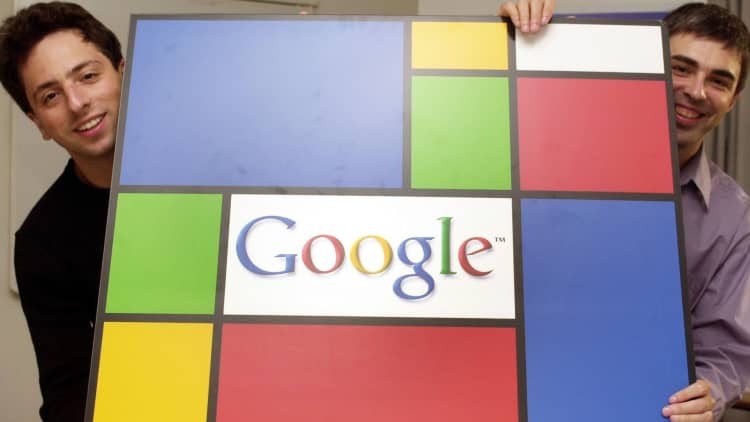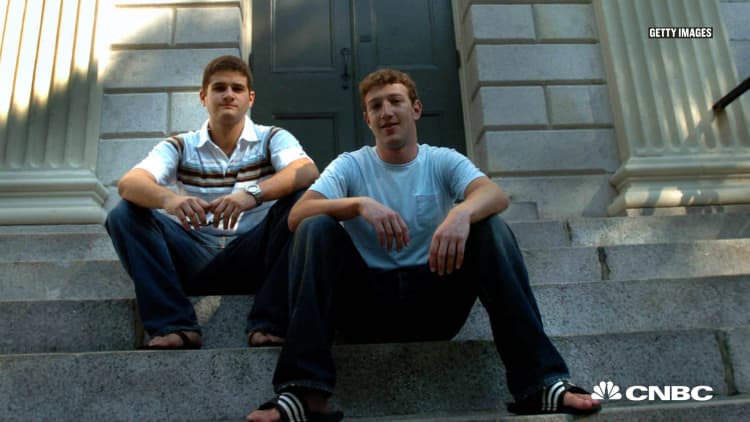Entrepreneurs have a reputation for working long hours to get their businesses up and running, leading some of their employees to a quick burnout.
But some business owners have instituted activities that may seem better suited to summer camp — outdoor planning sessions, meetings in a salt room, deal talks on a surfboard. They may sound fun and relaxing, but they are meant to be productive.
More from The New York Times:
Can't afford to buy a $3 million Ferrari Enzo? Lease one instead
Squabbles over the family summer home? Don't hire a lawyer just yet
Even for philanthropists, museums can make art a tough give
Eric Tetuan has the kind of New York job where he could be in the office 100 hours a week and still think about work the rest of his waking — and probably some of his sleeping — hours.
He loves what he does, running an event and production company called ProductionGlue in Midtown Manhattan. But a few years ago, he felt the effects of his staff's being overscheduled. He saw morale sinking and mistakes rising at his company. So he began forcing his workers to take walks, ride bikes or just sit by the Hudson River.

There was just one twist: These were not solitary moments to recharge but activities to be done with colleagues as a way to discuss work outside the office. His goal was to increase creativity at ProductionGlue, a business that thrived on creating spectacles.
"I knew it wasn't about more oversight on jobs," said Mr. Tetuan, a co-founder of the firm and its chief innovation officer. "It was about a holistic change to how we approached the job."
And that meant leaving the office behind. "There are a lot of distractions when you go into a conference room," he said, adding that workers were focused half on the meeting and half on their devices. "On a walk, we spur more ideas."
Far from aping the tech industry's often derided perks — think Google's rewarding employees with massages or Spotify's lunchtime concerts — these entrepreneurs, with a work force ranging from a handful employees to several hundred, are using unconventional approaches to improve their employees' focus.
Studies show that employees seek certain benefits when job-hunting. Most tend to seek out more traditional perks like health care, flexible hours and vacation time, according to findings from Fractl, an advertising agency in Delray Beach, Fla. But more elaborate perks like game rooms and gym membership were important when it came to retaining workers, according to a study from Technology Advice, a marketing agency in Nashville.

"Above some level of financial security, people care about being part of a community and belonging at work," said Jennifer Chatman, a professor of management at the Haas School of Business at Berkeley. "The key insight about these kinds of perks is that they bring people together and make work more fun. In this way, they effectively increase motivation and performance."
Marco Schnabl, co-founder and co-chief executive of automotiveMastermind, a company that sells predictive data around car sales to dealerships, said his employee head count had tripled in a year. Despite the rapid growth, he needs his 230 employees working together, not just working remotely on projects.
"We're in the financial center, and you have water all around," Mr. Schnabl said of working in New York, where the company is based. "So we say: This is going to be a walking meeting. For the next hour, we'll go on an extended walk with three or four people anywhere we can exercise our bodies a bit and think about topics that are relevant to the business."
David Heath, co-founder and chief executive of Bombas, a start-up that donates a pair of socks for every pair it sells, said the company had a 96 percent retention rate since it was founded in 2013. He attributed the low turnover to unconventional meeting spots.
"If people are building bonds when you go to SoulCycle or to a manicure, it frames the relationship differently," he said. "These are things you traditionally do with friends. It develops respect."
Even delivering bad news, he said, "comes from a moment of empathy."

Mr. Heath said Bombas had revenue of $70 million, which represents a year-over-year growth rate of 500 percent, and had donated four million pairs of socks to date. And retention of the company's 37 employees during a time of such tremendous growth has been a key to its success, Mr. Heath said.
Mr. Heath said he was focused on "scheduled spontaneity," which includes setting many of his monthly meetings in unusual places so his employees will do the same.
"Sometimes I'll feel instead of doing it in the conference room, let's go sit outside or have breakfast," he said. "An 8:30 a.m. monthly meeting, that's early for some people in the start-up world. What if I can elevate that a bit and say we meet at 7:30 a.m. for yoga?"
Just as a meeting outside can help spur creativity, solve a problem or keep an employee happy, it can also serve to end an impasse. Larry Newman, chief operating officer of the Health Media Network, a wellness and health education company, credits surfing with helping him close several deals, including the sale of his first health care company.
"We had spent countless hours in meetings and with lawyers," Mr. Newman said. "I said, 'I think we can get this done face to face.' We sat there in the water on our boards. We talked about the final points and pieces."
For the record, they were not surfing and talking at the same time: "You'd probably get killed," he said.
Mr. Newman said he had a negotiation planned for the surf off in Montauk, N.Y., in the fall. And he is hopeful that it, too, will help to wrap up a deal.
"You're negotiating to a human level, not a business level," he said. "It excites people."
This approach is paying off for employees and owners alike, but there are clearly times and places it does not work.

Mr. Tetuan said all of his company's initial creative meetings with clients take place in conference rooms to accommodate all the people who need to be involved.
Lyss Stern, chief executive of Divalysscious Moms, a direct marketing company geared toward parents, said she had moved away from long lunches or drinks after work because they were too time consuming. Her preferred meeting spot now is a Himalayan salt room at Modrn Sanctuary in Manhattan.
The salt floor is antifungal and antibacterial, and some people believe it can help with respiratory problems; for others, it can give them an energized feeling.
But not everyone likes to leave a meeting with a dusting of salt on their suit. "If it's a chief executive who has no time and just wants to meet in his/her boardroom, then it doesn't work," Ms. Stern said. "Or if it's someone who's straight up, very conservative, this may not be the type of meeting you want to take."
Still, she tries to do meetings there whenever she can. "You're sitting there, having this meeting, but you're also getting these mental health benefits," she said. "You're inhaling the dry salt. You're doing beneficial things for yourself and others."
Another potential drawback of these unconventional meeting spots is being out of touch with the very clients who are paying for the strolling, surfing and salty talks. So many entrepreneurs today are expected to be reachable.
For Mr. Tetuan, taking a few hours away from the office — and a client — is a worthwhile trade-off.
"Having that hour to think and not be distracted, I can get more done in a day," he said. "Someone may be looking for us for two hours, but at the end of the week, they know they're getting more out of us than others."
His favorite meeting activity is mountain biking with his creative team, which is not conducive to texting.
"I can leave my phone and clear my head," Mr. Tetuan said. "We're not busy giving quick responses. That can be the difference between $100,000 and $1 million."
Like this story? Like CNBC Make It on Facebook
Don't Miss: How Jeff Bezos' 'two pizza rule' can help you hold more productive meetings
This article was originally published on The New York Times.


